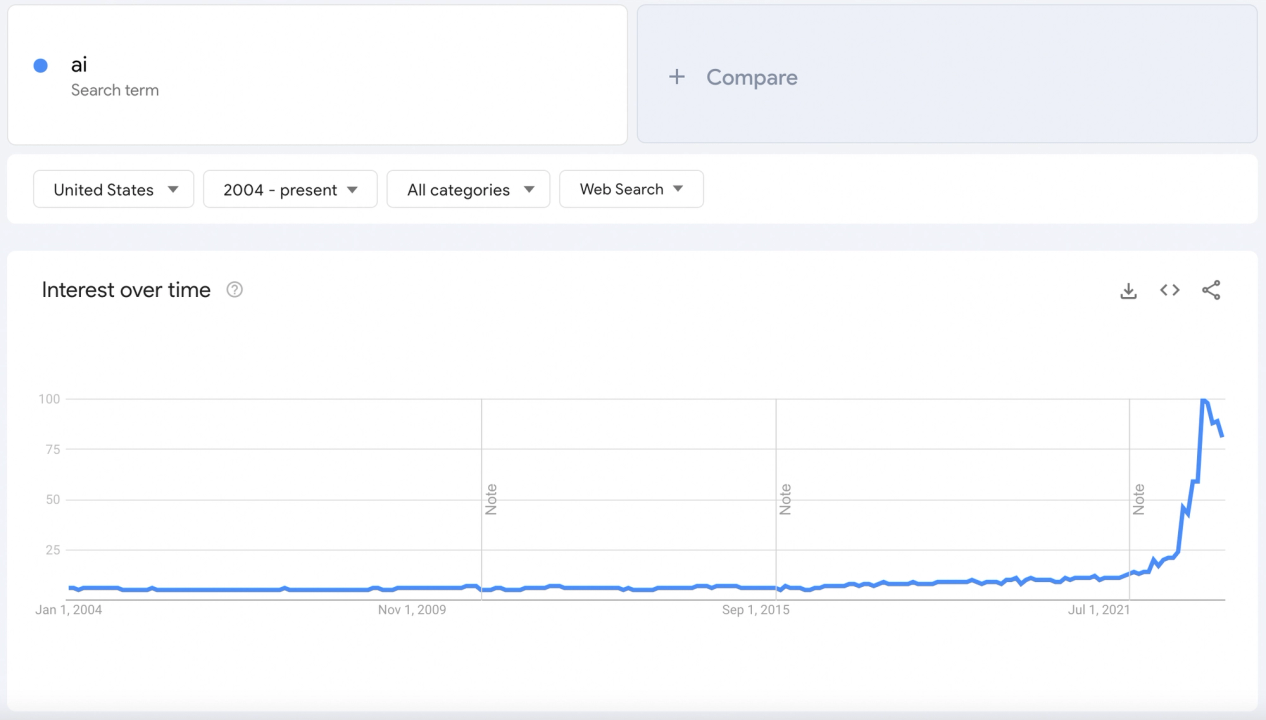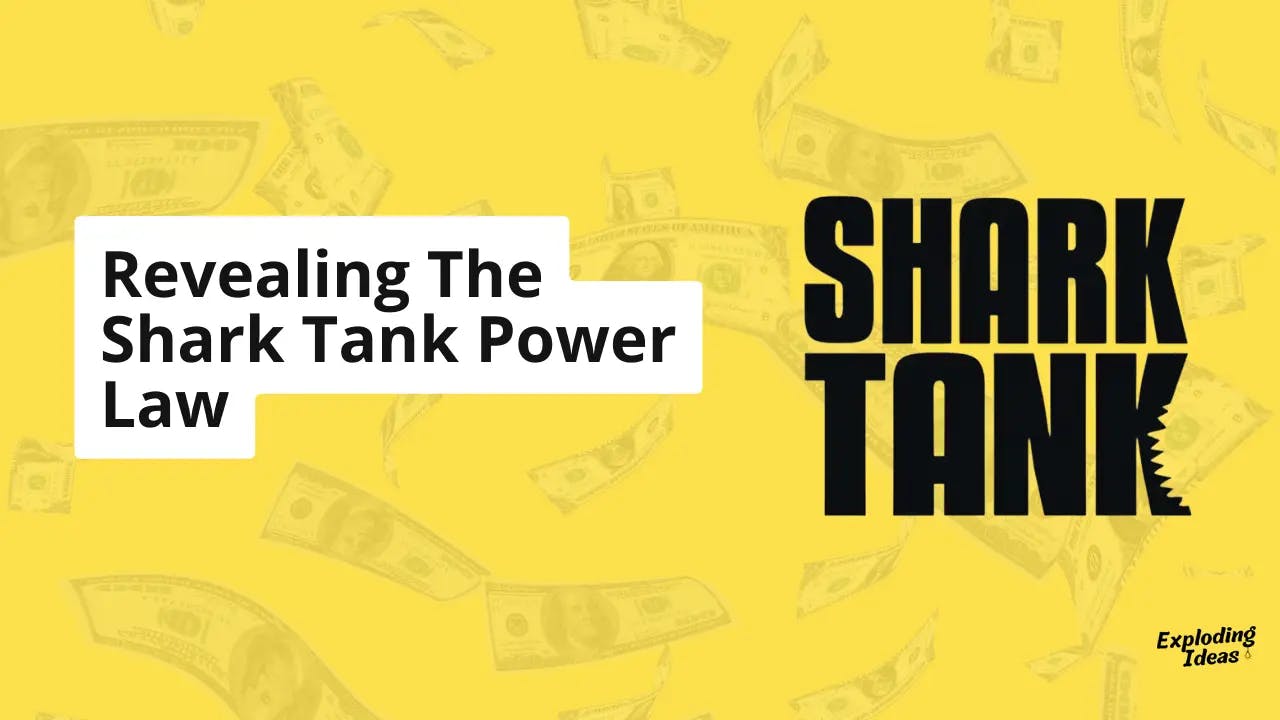5 Business Models Disrupting the Technology Industry

by Eric Lam - Published 8/14/2023
by Eric Lam - Published 8/14/2023

The evolution of technology is often interwoven with the transformative power of business models.
A key factor that determines the success and influence of a technological innovation is the business model behind it.
This article delves into the core of five disruptive business models and examines their impact on the technology industry.
Subscription-Based Model

Characteristics of Subscription-Based Models
The subscription model is one where users agree to pay a recurring fee, typically monthly or annually, in exchange for continuous access to a product or service. This model's roots can be traced back to traditional print media, but it's undergone a renaissance with the rise of digital services.
The Harvard Business Review points out that the subscription e-commerce market has grown by more than 100% a year over the past five years. This surge indicates a consumer shift towards seeking long-term value rather than single-use products.
Benefits for Tech Companies
In today's dynamic digital landscape, tech companies are continually seeking business models that not only drive growth but also foster sustained customer relationships. Enter the subscription model, which, over the past decade, has become an increasingly popular strategy, offering a plethora of benefits to tech enterprises.
At its core, the subscription model represents a shift from one-off purchases to recurring revenue. Instead of selling a product as a single transaction, companies charge customers a regular fee, often monthly or annually, to access their software or service. This approach has some profound implications for business stability and growth.
One of the most immediate benefits is the predictability of revenue. Companies that operate on a subscription basis can anticipate, with a fair degree of accuracy, their monthly or annual earnings. This predictability is invaluable for financial planning and forecasting. It reduces the volatility often associated with sales-driven models, where revenues might fluctuate wildly based on seasonal demand or market trends. With a steady stream of incoming revenue, tech companies can better manage cash flow, allocate resources more effectively, and plan strategic investments with confidence.
Moreover, the subscription model intrinsically promotes an ongoing relationship between the company and its customers. Since customers are committing to a recurring payment, they expect consistent value from the service. This expectation incentivizes companies to continuously enhance their offerings, ensuring that software is regularly updated, bugs are addressed promptly, and new features are rolled out to keep the user experience fresh and relevant. Such a dynamic creates a feedback loop wherein customers remain engaged and loyal, and companies stay agile and responsive.
The long-term nature of these customer relationships also provides companies with rich data on user behavior and preferences. This data can be harnessed to fine-tune product development, tailor marketing strategies, and even predict future market trends.
The value of the subscription model isn't just theoretical. Real-world data underscores its potency. A notable report from Zuora, a frontrunner in subscription management solutions, sheds light on the financial impact of this model. According to their findings, businesses operating on a subscription basis witnessed their revenues grow at a rate that was approximately five times faster than the revenues of companies indexed in the S&P 500. This stark difference underscores the competitive edge that a subscription approach can offer in the tech industry.
Freemium Model

Defining the Freemium Model
At its core, the 'freemium' model is an amalgamation of 'free' and 'premium'. It provides users with basic functionalities for free, while advanced features come at a price. A study by TechCrunch observed that almost two-thirds of the most successful SaaS companies offer a freemium version of their product.
How Tech Startups Leverage Freemium
In the fast-paced, competitive world of tech startups, the challenge of user acquisition is paramount. Many young companies grapple with the question: how can we entice potential users to try our product in a sea of similar offerings? The freemium model has emerged as an astute strategy to address this challenge and has become the cornerstone for many successful tech enterprises.
For nascent tech startups, the freemium model does more than just reduce the barrier to entry; it fundamentally reshapes the customer's journey. By providing core services or features at no cost, startups can cast a wider net, appealing to a diverse and larger user base. This initial 'free' offering isn't just about generosity; it's a calculated move to introduce users to the brand, ethos, and utility of the product.
Once users are inside the ecosystem, they can experience firsthand the value proposition of the product. This 'try before you buy' approach gives users a taste of what's on offer, allowing them to evaluate the product's relevance to their needs without any financial commitments. It's here that the design, functionality, and overall user experience play a pivotal role. If the free version of the product is robust, intuitive, and addresses a genuine need, users are more likely to see the value in upgrading to unlock even more benefits.
Dropbox stands as a prime example of the freemium model executed to perfection. Initially offering users a limited storage capacity for free, it relied on the sheer utility and simplicity of its product to draw users in. As users began to store more data and integrate Dropbox into their daily workflows, the need for additional storage and enhanced features became evident. Recognizing this need, Dropbox adeptly presented its premium offerings, which boasted expanded storage capacities, advanced collaboration tools, and heightened security features. For many, the decision to upgrade was a natural progression, facilitated by their positive experience with the free version.
Beyond just individual user conversion, the freemium model, when combined with referral incentives, can create a viral growth effect. Continuing with the Dropbox example, their referral program rewarded both the referrer and the referred with additional free storage, creating a network effect that rapidly expanded their user base.
Platform-as-a-Service (PaaS)

What is PaaS?
Platform-as-a-Service (PaaS) provides developers with a platform that enables the creation, deployment, and management of applications without the need to manage the underlying infrastructure. It sits between Software-as-a-Service (SaaS) and Infrastructure-as-a-Service (IaaS) in the cloud computing stack.
Revolutionizing the Tech Landscape with PaaS
For developers and IT professionals across the globe, Platform-as-a-Service (PaaS) represents a revolutionary change in the way they approach software and application development.
In traditional development environments, a significant portion of time and resources was allocated to setting up, managing, and maintaining the hardware and infrastructure required to run applications.
This not only involved significant capital expenditure but also posed challenges in scalability, performance tuning, and infrastructure management.
PaaS, in its transformative essence, offers a remedy to these challenges. It provides a cloud-based platform that houses all the necessary tools and environments required to develop, test, deploy, and manage applications. This means developers can focus purely on writing code and building functionality without being encumbered by the underlying infrastructure concerns. The agility offered by PaaS ensures that applications can be brought to market faster, benefiting from a rapid development-deployment lifecycle.
Moreover, PaaS solutions come with the inherent advantages of cloud computing: scalability, reliability, and flexibility. If an application experiences a sudden surge in traffic, PaaS platforms can automatically allocate more resources to handle the increased load. This dynamic allocation ensures optimal performance without manual intervention. Also, since these platforms are often backed by global data centers, they provide redundancy, ensuring application availability even in the face of localized failures.
Given these advantages, it's no surprise that the adoption of PaaS is on an upward trajectory. With businesses aiming to be more agile and responsive to market needs, the demand for efficient development platforms is soaring.
This sentiment is echoed by industry researchers. For instance, a comprehensive study by Grand View Research projects that the global PaaS market will witness substantial growth, forecasting its valuation to reach a remarkable USD 12.2 billion by 2027. Such statistics underscore the pivotal role PaaS is set to play in shaping the future landscape of software development and deployment.
Peer-to-Peer Business Model

Unraveling Peer-to-Peer Networks
Peer-to-Peer (P2P) systems function without a centralized control, where each participant acts as both client and server. This model has gained prominence with the rise of cryptocurrencies and file-sharing platforms.
Its Impact on the Tech World
Peer-to-Peer (P2P) networks represent more than just a technological shift; they signify a fundamental change in how transactions and interactions can occur in the digital realm. With P2P, we're looking at the potential democratization of entire digital ecosystems. What makes this model uniquely compelling is its decentralized nature, which stands in stark contrast to the traditionally centralized systems that have dominated industries for decades.
In traditional setups, intermediaries like banks, agencies, or brokers often control transactions, leading to increased costs, time delays, and often bureaucratic hurdles. These intermediaries usually command significant fees or commissions for their role, and their centralized decision-making processes can sometimes result in inefficiencies or even biases.
P2P networks, on the other hand, circumvent these intermediaries entirely. They facilitate direct interactions between parties, leading to a more streamlined, cost-effective, and transparent process. The savings from reduced overheads and intermediary fees can be substantial, and this cost-effectiveness, combined with the system's inherent efficiency, makes P2P models immensely attractive to both businesses and consumers.
Take the financial sector as an illustrative example. Traditional banking systems, with their brick-and-mortar infrastructure and layered decision-making, are now being challenged by P2P lending platforms. These platforms connect borrowers directly with lenders, sidestepping the conventional banking infrastructure. This not only means quicker loan approvals but often results in better interest rates for borrowers and higher returns for lenders, thanks to the reduced overhead costs.
But the implications of P2P extend beyond just finance. We're witnessing the rise of P2P systems in sectors like content distribution, e-commerce, energy distribution, and even in foundational internet services like data storage and bandwidth sharing. The overarching promise of P2P is a more democratic, efficient, and user-centric digital world, where the power dynamics shift from centralized entities to individual participants.
On-Demand Service Models

Characteristics of On-Demand Services
The on-demand model capitalizes on immediate service delivery, facilitated by digital platforms. With the advent of smartphones and high-speed internet, users expect instant gratification, which this model effectively caters to.
Real-world Examples of On-Demand Tech Services
Uber, Airbnb, and DoorDash are not just brand names but pioneers that heralded the rise of the on-demand economy. They epitomize the transformation in consumer behavior, wherein immediacy, convenience, and digital-first experiences are paramount.
While Uber redefined urban transportation and Airbnb reshaped our approach to travel accommodation, DoorDash took the convenience of food delivery to new heights. But the on-demand wave hasn't stopped at these services. In recent years, there's been a meteoric rise in various niches adopting the on-demand mantra.
Telemedicine platforms now offer instant health consultations, eliminating the traditional wait times of clinics. Personal tutoring has been democratized with platforms that connect students with educators in real-time, tailored to their specific needs.
Home services, grocery deliveries, personal fitness trainers, and even pet care have been enveloped by the on-demand model.
The pervasive reach of smartphones, coupled with robust digital infrastructure, has made this expansion feasible and consumer-centric. According to industry forecasts, this momentum shows no signs of slowing down.
The global on-demand economy, fueled by these myriad services, is expected to skyrocket, reaching a staggering valuation of $335 billion by 2025, showcasing the undeniable impact and potential of on-demand services in our daily lives.
Conclusion
The convergence of technology and innovative business models is constantly reshaping industries.
These disruptive models not only offer new pathways for revenue generation but also reorient how consumers interact with technology.
As we move forward, understanding these models is pivotal for both businesses and consumers to navigate the ever-evolving tech landscape.
FAQs
- What's the primary difference between SaaS and PaaS?
- While SaaS provides software over the cloud, PaaS offers a platform for developing and managing applications.
- Why is the freemium model popular among startups?
- It facilitates user acquisition by offering basic services for free, and subsequently monetizes through premium offerings.
- How does the subscription model ensure long-term customer engagement?
- By offering regular updates and continuous value, fostering a prolonged customer relationship.
- What is the potential of the P2P model beyond cryptocurrencies?
- P2P can revolutionize sectors like lending, e-commerce, and content distribution, making them more decentralized and efficient.
- What drives the success of on-demand service models?
- The combination of immediate service delivery, digital accessibility, and personalized user experiences.
Want to learn more?
We'll share with you charts, SEO data, and the businesses that are working, and how you can ultimately ride trend waves, and make over 6 figures capitalizing on your own online business.
👉Become an Exploding Ideas Pro Member to unlock our Deep Dives on how to build your own online business.

